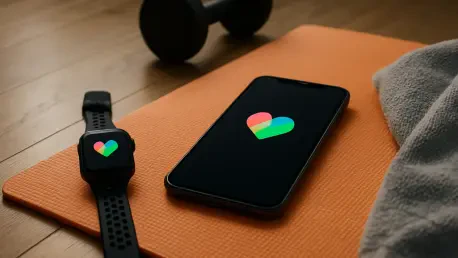In an era where technology is reshaping healthcare, a growing number of older adults are grappling with chronic conditions like diabetes, often struggling to manage their health due to limited access to personalized care. For seniors, maintaining stable blood glucose levels and adhering to medication schedules can be daunting, especially when traditional healthcare systems may not fully address their unique needs. Recent research from esteemed institutions has shed light on an innovative solution: mobile health apps. These digital tools, designed to support health management through smartphones and tablets, are emerging as potential game-changers for aging populations. By offering features like reminders, educational resources, and direct communication with healthcare providers, such apps could bridge critical gaps in diabetes care. This exploration delves into how these technologies are impacting seniors, the tangible benefits observed, and the challenges that must be overcome to ensure lasting effectiveness in improving health outcomes.
Unlocking Better Health Outcomes with Digital Tools
Mobile health apps are proving to be a vital resource for seniors managing diabetes, as evidenced by recent studies that highlight significant improvements in key health metrics. A comprehensive meta-analysis of randomized controlled trials, involving hundreds of participants, revealed that older adults using these apps experienced a notable reduction in glycated hemoglobin (HbA1c) levels by about 0.4 points. While this figure might appear small, it carries substantial clinical weight, often moving individuals from a prediabetic state to within normal ranges as defined by medical standards. The ability of these apps to facilitate direct interaction with healthcare providers stands out as a critical factor, enabling real-time guidance and adjustments to treatment plans. This integration of technology with personal care underscores a shift toward more connected and responsive health management, offering seniors a practical way to monitor and improve their condition from the comfort of their homes.
Beyond blood glucose control, the potential of mobile health apps to enhance medication adherence among seniors represents another crucial benefit in chronic disease management. For many older adults, sticking to prescribed medication schedules is a persistent challenge, often leading to worsening health conditions if not addressed. Research indicates that certain apps, equipped with reminders and tracking features, can support users in maintaining consistency with their treatments. Although data on this specific outcome is limited, the positive trends observed suggest a promising avenue for reducing the risks associated with missed doses. However, a lingering concern is the decline in user engagement over time, as enthusiasm for these tools tends to wane without ongoing motivation or support. Addressing this drop-off through innovative design and continuous updates could be key to ensuring that the benefits of improved adherence are sustained for long-term health gains.
Designing for Seniors: Challenges and Opportunities
Despite the encouraging results, a significant hurdle remains in the design of mobile health apps, which often fails to account for the specific needs of older adults. Many current applications are developed with younger, tech-savvy users in mind, leaving seniors to navigate interfaces that may be confusing or inaccessible due to vision impairments, reduced dexterity, or unfamiliarity with digital platforms. Experts argue that co-designing these tools with input from the aging population could dramatically enhance their usability and effectiveness. Tailoring features to accommodate individual differences, such as larger text sizes or voice-activated commands, could make a substantial difference. This push for inclusivity in digital health innovation highlights the necessity of involving seniors in the development process to ensure that technology truly serves those who need it most, paving the way for more equitable healthcare solutions.
Another layer of complexity lies in sustaining user engagement over extended periods, a challenge that could undermine the long-term impact of mobile health apps for seniors with diabetes. While initial usage often shows promising results, studies have noted a gradual decline in interaction as the novelty wears off, potentially diminishing the apps’ effectiveness. To counter this, developers might consider incorporating gamification elements, personalized feedback, or community support features to keep users motivated. Additionally, the diversity of app functionalities, from educational content to habit-tracking tools, offers a multifaceted approach to health management, but without strategies to maintain interest, these benefits risk being short-lived. Tackling this issue requires a deeper understanding of what drives sustained use among older adults, ensuring that digital tools remain a consistent part of their daily health routines rather than a temporary aid.
Paving the Way for Future Innovations
Reflecting on the strides made, it becomes evident that mobile health apps have already shown considerable promise in supporting seniors with diabetes by reducing HbA1c levels and fostering better medication adherence. The journey, however, points to gaps that need addressing, particularly in user-centric design and sustained engagement. Looking ahead, the focus should shift toward collaborative efforts between developers, healthcare providers, and older adults to create tailored solutions that resonate with this demographic. Investment in research to explore long-term usage patterns could uncover new ways to maintain interest and effectiveness. Furthermore, policymakers might consider initiatives to make these technologies more accessible, ensuring that cost or lack of digital literacy do not stand as barriers. By building on the foundation laid by recent studies, the healthcare community can drive forward a future where digital tools empower seniors to manage their health with confidence and ease.









